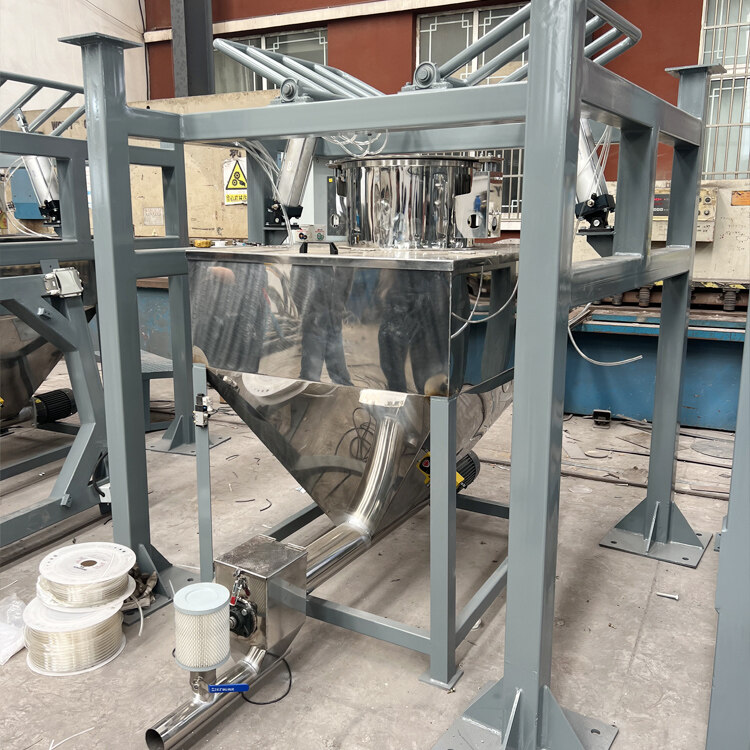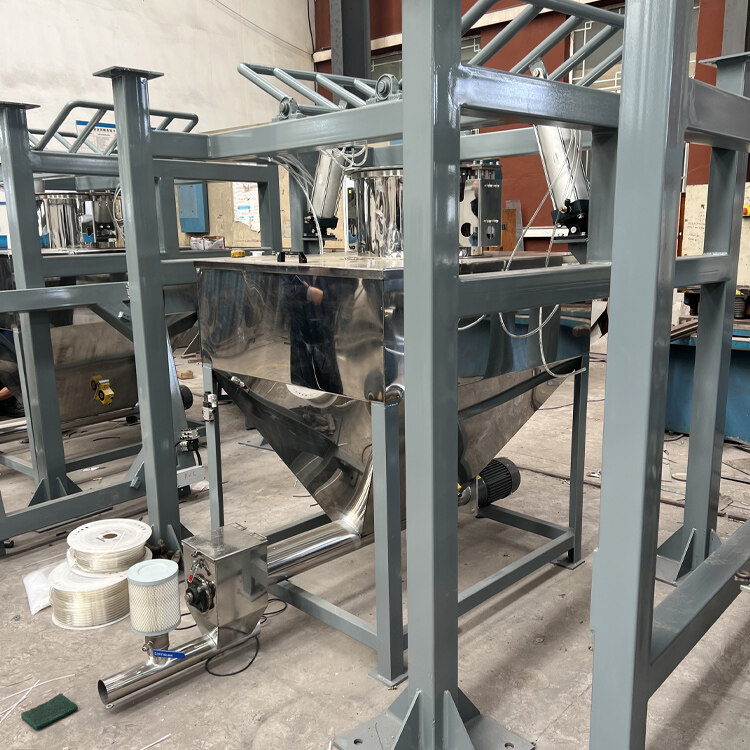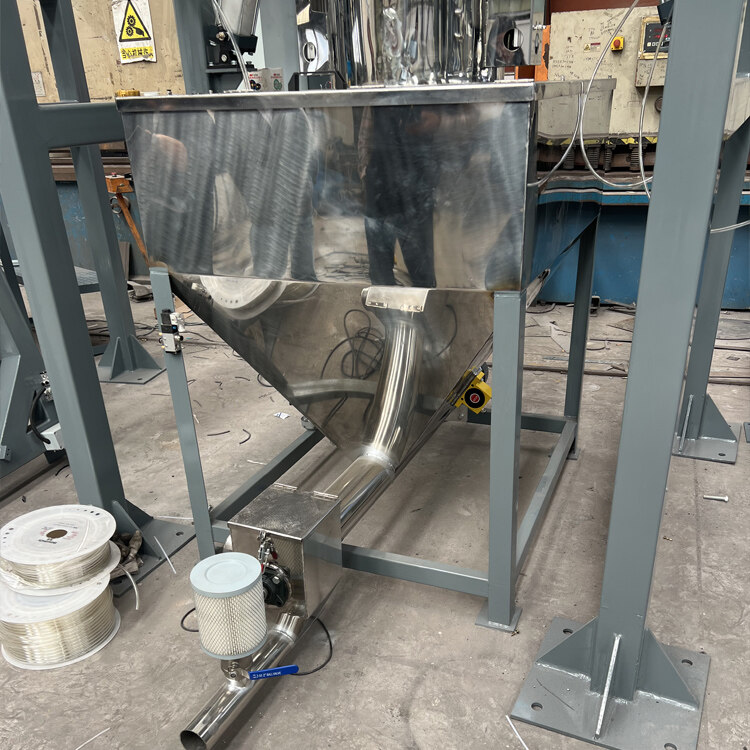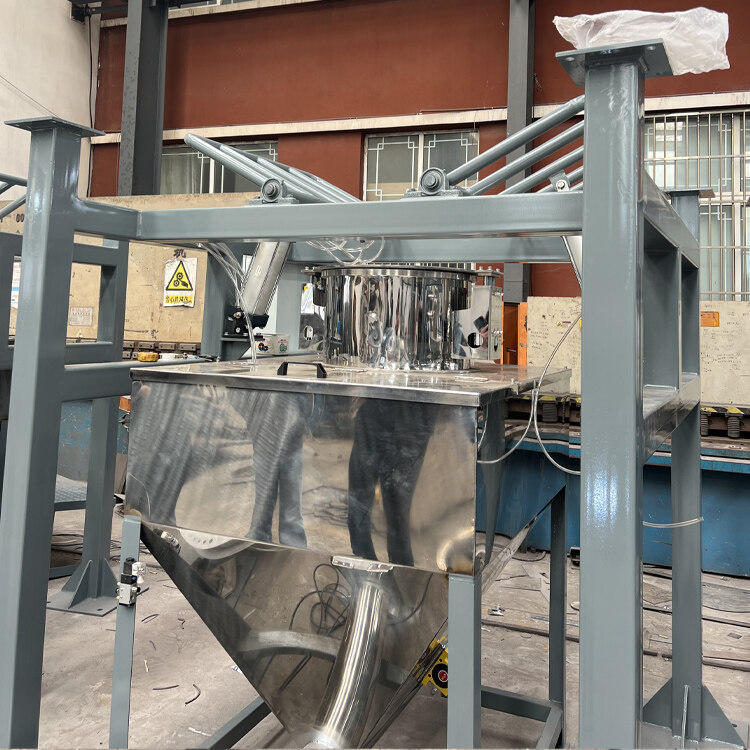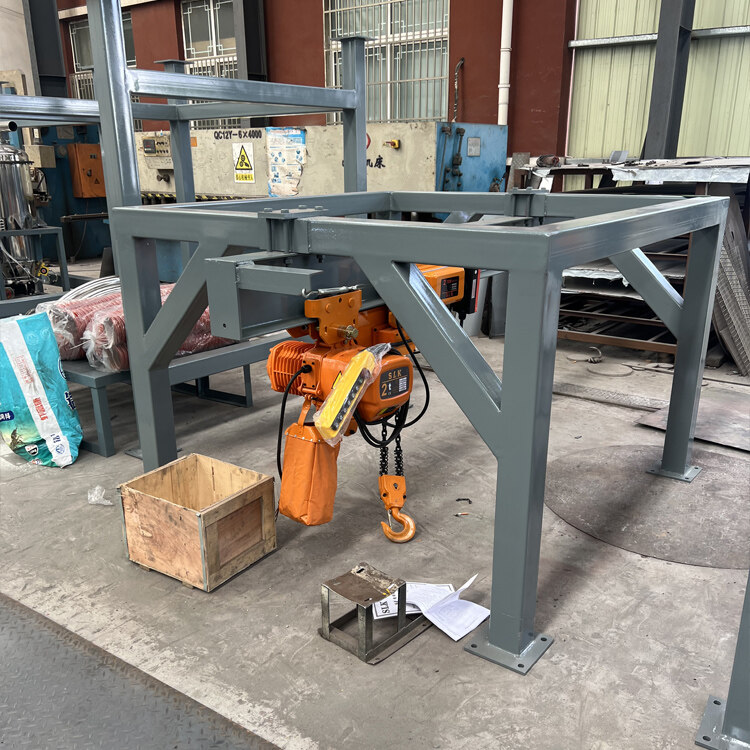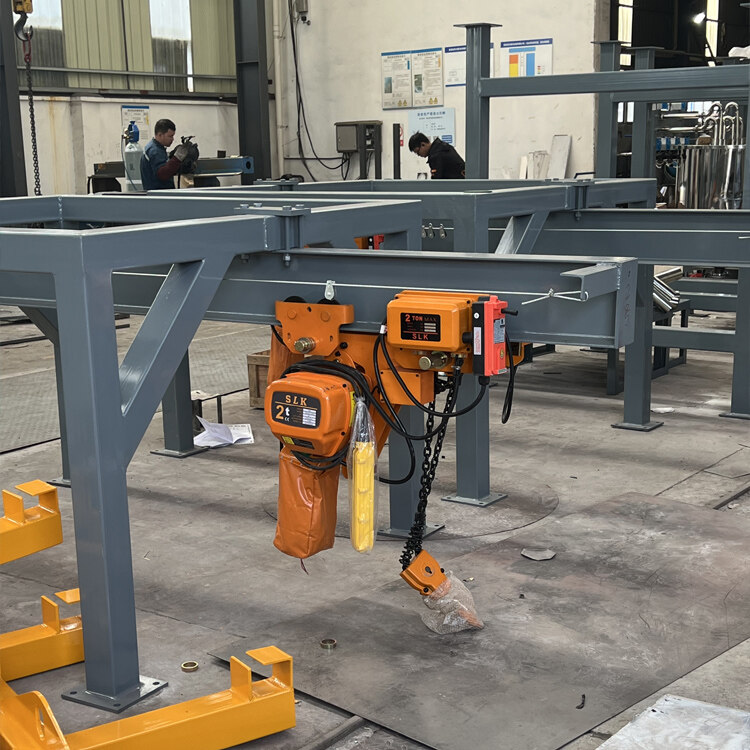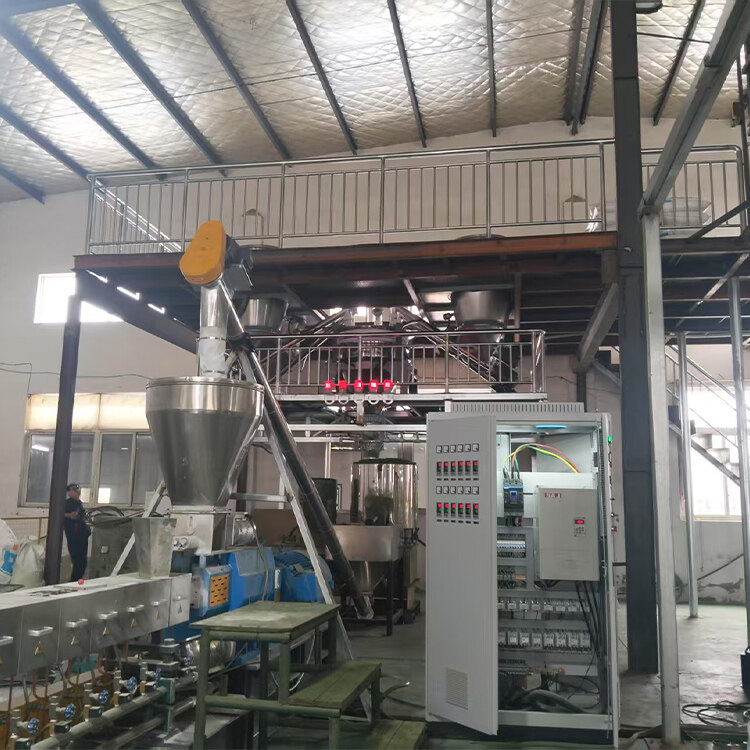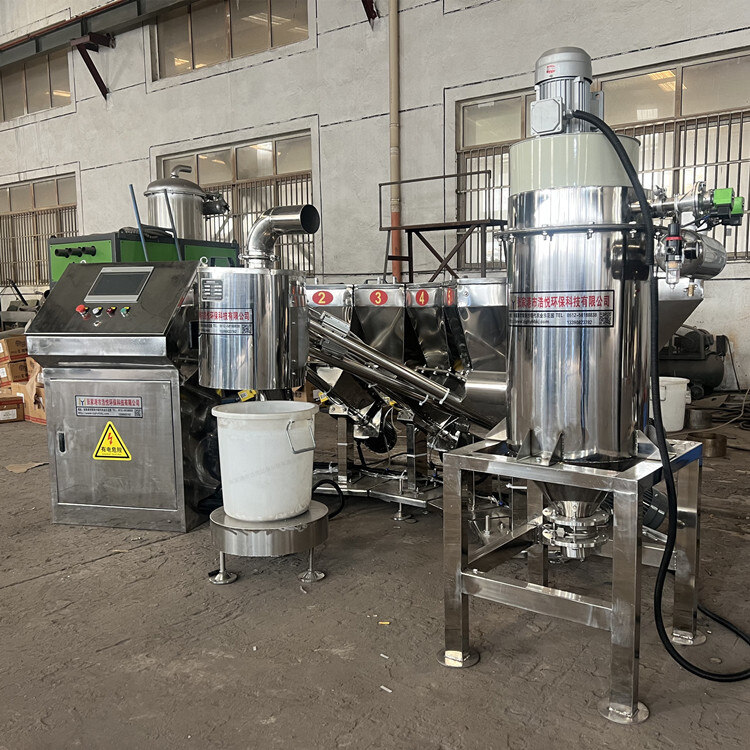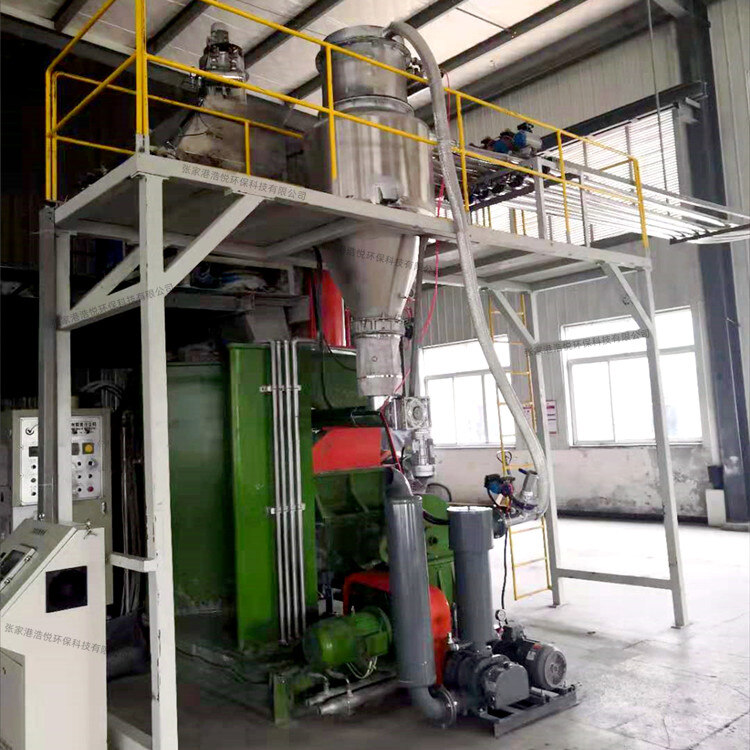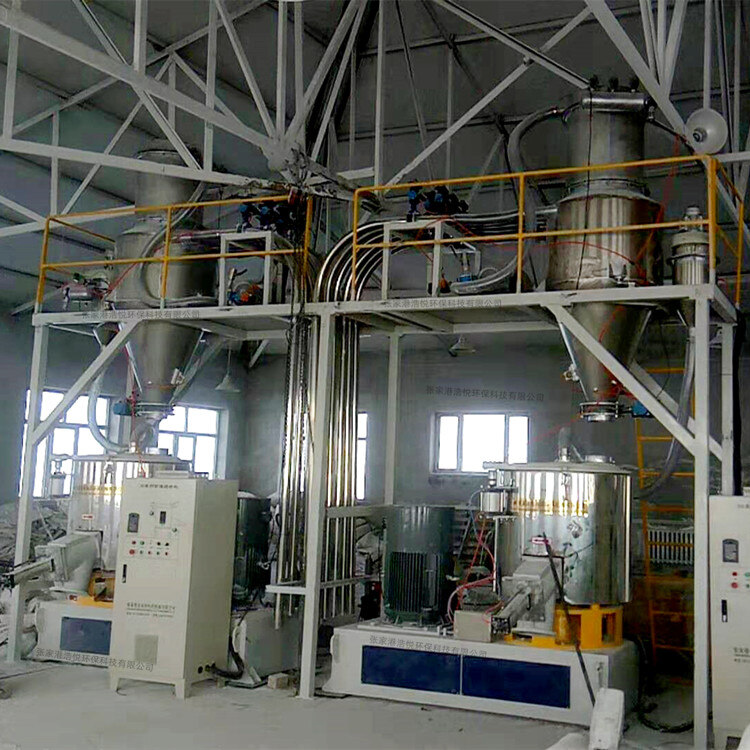- Introduction to automatic batching machine and fully automatic batching machine equipment
- The powder metering system tells you about the introduction of the mixing and drying machine
- 1000kg vacuum feeding machine
- Fully automatic small material batching system
- Research on Innovation of Automatic Weighing Machine Technology
- Design and operation of automatic batching system using PLC, industrial computer and frequency converter
Ton bag feeding station
- Category:Feeding station
- Hits:175次
- Release Date:2025-06-23
- Share:
- Inquiry
- Details
1、 Functional Features
Efficient unloading and feeding
It can quickly complete the lifting, positioning, bag breaking, and material placement of ton bags, reducing the workload of manual handling and bag dismantling, and improving production efficiency.
Design discharge structures for different material characteristics (such as powder, particles, and blocks) to ensure smooth material delivery and avoid blockages.
Automation and Intelligence
Equipped with electric hoists, lifting platforms and other devices to achieve automatic lifting and positioning of ton bags. Some high-end equipment can be linked to PLC control systems to complete the unloading process with one click.
It can integrate material level monitoring function, automatically warning or stopping feeding when the material in the receiving container reaches the set amount, to avoid overload.
Environmental Protection and Safety Design
The fully enclosed discharge structure combined with dust removal system (such as bag filter, negative pressure suction device) effectively controls dust overflow and meets environmental protection requirements.
Equipped with safety protection devices such as emergency stop button, overload protection, anti fall locking mechanism, etc., to ensure the safety of operators.
The parts that come into contact with the material are made of stainless steel 304/316L material, with a polished surface that meets the hygiene standards of the food and pharmaceutical industries.
Flexible adaptability
Compatible with ton bags of different specifications (usually bearing 500-2000kg), and can adapt to different sizes by adjusting the height and width of the lifting device.
Support docking with downstream equipment such as screw conveyors, pneumatic conveying pipelines, mixers, etc., to achieve automated material conveying.
2、 System composition
Ton bag processing unit
Lifting device: including electric hoist, sling, hook, etc., used for lifting and moving ton bags. Some equipment is equipped with a rotating mechanism to facilitate the positioning of ton bags.
Bag breaking mechanism: Common forms include manual cutting knives, automatic bag breaking knives, or tearing devices, which achieve the opening of ton bags through manual assistance or automatic control.
Bracket and Platform: Supports the weight of ton bags, provides stable unloading stations, and some platforms can be raised and lowered to adapt to the height of different feeding equipment.
Unloading and feeding unit
Unloading hopper: a conical or flat bottomed structure, which may be equipped with vibrators and arch breaking devices inside to prevent material bridging (clumping and blockage) and ensure smooth unloading.
Gate control: Control the material flow rate through manual butterfly valves, electric gate valves, etc., to facilitate the adjustment of feeding speed.
Material interface: It can match the feeding ports of pipelines, silos, mixers and other equipment. Sealing devices are usually installed at the interface to prevent dust leakage.
Dust removal and environmental protection unit
Dust removal system: Connect the suction port at the top of the unloading hopper, generate negative pressure through a fan, and suck the dust generated during the unloading process into the dust collector for filtration. The purified air is discharged or recycled.
Sealing component: The interface between the ton bag and the discharge hopper is sealed with rubber sealing rings, flexible curtains, etc. to reduce dust spillage.
control system
Adopting PLC control or touch screen operation interface, it can set the unloading process, monitor equipment status (such as changes in ton bag weight, operation of dust removal fan), and support fault alarm function.
3、 Application scenarios
chemical industry
Used for unloading plastic particles such as polyethylene, polypropylene, PVC, as well as chemical raw materials (such as carbon black, pigments, additives) in ton bags, and connecting with extruders, reaction vessels, and other equipment.
Food and pharmaceutical industry
Suitable for feeding powdered materials such as flour, starch, sugar powder, pharmaceutical intermediates, etc., meeting the hygiene requirements of dust-free workshops, and can be linked with mixers, granulators, etc.
Building Materials and Mining
Used for unloading ton bags of building materials such as cement, fly ash, mineral powder, quartz sand, etc., connecting with mixers, storage bins, etc., to reduce manual dust contact.
Feed and Agriculture
The ton bag feeding of feed raw materials (such as soybean meal and corn meal) and chemical fertilizers (such as urea and compound fertilizer) is suitable for the automation requirements of feed production line.
4、 Key selection points
Material characteristics: Select the discharge hopper structure (such as whether vibration arch breaking is required) and material based on the fluidity, particle size, humidity, corrosiveness, etc. of the material.
Production efficiency: It is necessary to match the unloading speed of ton bags with the processing capacity of downstream equipment. For continuous production scenarios, feeding stations with buffer silos can be selected.
Environmental requirements: For working conditions with high dust content, it is necessary to strengthen the configuration of dust removal systems (such as multi-stage dust removal), and the pharmaceutical and food industry should pay special attention to the hygiene certification of materials.
Space layout: Choose fixed or mobile feeding stations based on the height and area of the workshop to ensure sufficient space for lifting and unloading.
The ton bag feeding station has greatly improved the unloading efficiency of bulk materials through automated design, while reducing manual labor intensity and dust pollution. It is an important equipment in the material handling process of modern industrial production.


